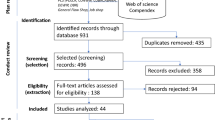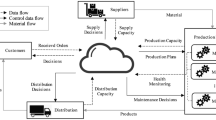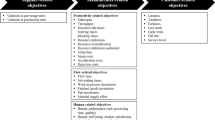Abstract
Increased customization has strengthened the importance of make-to-order companies. The advent of lean management and the introduction of smart and flexible technologies has enabled many of these companies to create flow shop routings. Order review and release (ORR) research, which originally focused on job shops, has started paying attention to flow shops. However, the results have not provided clarity on the best ORR method for flow shops. This study aims at developing such a method by applying a modular design approach. It identifies the relevant elements of ORR methods for flow shops, combines them into new methods and evaluates them in a simulation study. The simulation results demonstrate that performance in pure flow shops can be strongly improved by applying the right combination of workload measures, load balancing, and order dispatching. Specifically, the results show that (1) classical workload measures are still as effective as novel measures that have been suggested for flow shops, (2) balancing workloads explicitly through optimization at the order release stage strongly improves performance, and (3) shortest processing time dispatching is highly effective in flow shops as it avoids starvation of stations. In-depth analyses have been executed to unravel the reasons of performance improvements. As such, the article provides clarity on the improvement potential that is available for ORR in flow shops, while the new modular methods provide a first step in exploiting this potential.










Similar content being viewed by others
References
Baker KR (1984) Sequencing rules and due-date assignments in a job shop. Manag Sci 30(9):1093–1104
Baykasoğlu A, Göçken M (2011) A simulation based approach to analyse the effects of job release on the performance of a multi-stage job-shop with processing flexibility. Int J Prod Res 49(2):585–610
Bergamaschi D, Cigolini R, Perona M, Portioli A (1997) Order review and release strategies in a job shop environment: a review and a classification. Int J Prod Res 35(2):399–420
Caprihan R, Kumar A, Stecke KE (2006) A fuzzy dispatching strategy for due-date scheduling of FMSs with information delays. Int J Flex Manuf Syst 18:29–53
Cigolini R, Portioli-Staudacher A (2002) An experimental investigation on workload limiting methods within ORR policies in a job shop environment. Prod Plan Contr 13(7):602–613
Cigolini R, Perona M, Portioli A (1998) Comparison of order review and release techniques in a dynamic and uncertain job shop environment. Int J Prod Res 36(11):2931–2951
Das SR, Khumawala BM (1991) An efficient heuristic for scheduling batches of parts in a flexible flow system. Int J Flex Manuf Syst 3:121–147
Fernandes NO, Land MJ, Carmo-Silva S (2016) Aligning workload control theory and practice: lot splitting and operation overlapping issues. Int J Prod Res 54(10):2965–2975
Fernandes NO, Thürer M, Pinho TM, Torres P, Carmo-Silva S (2020) Workload control and optimised order release: an assessment by simulation. Int J Prod Res 58(10):3180–3193
Fullerton RR, Kennedy FA, Widener SK (2014) Lean manufacturing and firm performance: the incremental contribution of lean management accounting practices. J Oper Manag 32(7–8):414–428
Germs R, Riezebos J (2010) Workload balancing capability of pull systems in MTO production. Int J Prod Res 48(8):2345–2360
Haeussler S, Netzer P (2019) Comparison between rule- and optimization-based workload control concepts: a simulation optimization approach. Int J Prod Res. https://doi.org/10.1080/00207543.2019.1634297(to appear)
Haeussler S, Stampfer C, Missbauer H (2020) Comparison of two optimization based order release models with fixed and variable lead times. Int J Prod Econ. https://doi.org/10.1016/j.ijpe.2020.107682(to appear)
Henrich P, Land M, Gaalman G (2004) Exploring applicability of the workload control concept. Int J Prod Econ 90:187–198
Irastorza JC, Deane RH (1974) Loading and balancing methodology for job shop control. AIIE Trans 6(4):302–305
Krishnamurthy A, Suri R (2009) Planning and implementing POLCA: a card-based control system for high variety or custom engineered products. Prod Plan Contr 20(7):596–610
Land MJ (2006) Parameters and sensitivity in workload control. Int J Prod Econ 40:196–209
Land MJ, Gaalman GJC (1996) Workload control concepts in job shops: a critical assessment. Int J Prod Econ 46–47:535–548
Land MJ, Gaalman GJC (1998) Performance of workload control concepts in job shops: improving the release method. Int J Prod Econ 56–57:347–364
Land MJ, Stevenson M, Thürer M (2014) Integrating load-based order release and priority dispatching. Int J of Prod Res 52(4):1059–1073
Lin JT, Chen CM (2015) Simulation optimization approach for hybrid flow shop scheduling problem in semiconductor back-end manufacturing. Simul Model Pract Theory 51:100–114
Lin JT, Chiu CC, Chang YH (2019) Simulation-based optimization approach for simultaneous scheduling of vehicles and machines with processing time uncertainty in FMS. Flex Serv Manuf J 31(1):104–141
Missbauer H (2020) Order release planning by iterative simulation and linear programming: theoretical foundation and analysis of its shortcomings. Eur J Oper Res 280(2):495–507
Onur L, Fabrycky WJ (1987) Input/output control system for the dynamic job shop. IIE Trans 19(1):88–97
Oosterman B, Land M, Gaalman G (2000) The influence of shop characteristics on workload control. Int J Prod Econ 68:107–119
Perona M, Portioli A (1998) The impact of parameters setting in load oriented manufacturing control. Int J Prod Econ 55:133–142
Portioli-Staudacher A, Tantardini M (2012) A lean-based ORR system for non-repetitive manufacturing. Int J Prod Res 50(12):3257–3273
Portioli-Staudacher A, Costa F, Thürer M (2020) The use of labour flexibility for output control in workload controlled flow shops: a simulation analysis. Int J Ind Eng Comput 11(3):429–442
Sabuncuoglu I, Karapinar HY (1999) Analysis of order review/release problems in production systems. Int J Prod Econ 62:259–279
Shimoyashiro S, Isoda K, Awane H (1984) Input scheduling and load balance control for a job shop. Int J Prod Res 22(4):597–605
Theorin A, Bengtsson K, Provost J, Lieder M, Johnsson C, Lundholm T, Lennartson B (2017) An event-driven manufacturing information system architecture for Industry 4.0. Int J Prod Res 55(5):1297–1311
Thürer M, Stevenson M (2016) Card-based delivery date promising in pure flow shops with order release control. Int J Prod Res 54(22):6798–6811
Thürer M, Silva C, Stevenson M (2011) Optimising workload norms: the influence of shop floor characteristics on setting workload norms for the workload control concept. Int J Prod Res 49(4):1151–1171
Thürer M, Stevenson M, Silva C, Land MJ, Fredendall LD, Melnyk SA (2014) Lean control for make-to-order companies: integrating customer enquiry management and order release. Prod Oper Manag 23(3):463–476
Thürer M, Stevenson M, Protzman CW (2015a) COBACABANA (control of balance by card based navigation): an alternative to kanban in the pure flow shop? Int J Prod Econ 166:143–151
Thürer M, Land MJ, Stevenson M, Fredendall LD, Godinho Filho M (2015b) Concerning workload control and order release: the pre-shop pool sequencing decision. Prod Oper Manag 24(7):1179–1192
Thürer M, Stevenson M, Silva C, Qu T (2017) Drum-buffer-rope and workload control in high-variety flow and job shops with bottlenecks: an assessment by simulation. Int J Prod Econ 188:116–127
Thürer M, Stevenson M, Renna P (2019a) Workload control in dual-resource constrained high-variety shops: an assessment by simulation. Int J Prod Res 57(3):931–947
Thürer M, Zhang H, Stevenson M, Costa F, Ma L (2019b) Worker assignment in dual resource constrained assembly job shops with worker heterogeneity: an assessment by simulation. Int J Prod Res. https://doi.org/10.1080/00207543.2019.1677963(to appear)
Thürer M, Stevenson M, Land MJ, Fredendall LD (2019c) On the combined effect of due date setting, order release, and output control: an assessment by simulation. Int J Prod Res 57(6):1741–1755
Thürer M, Ma L, Stevenson M (2020) Workload control order release in general and pure flow shops with limited buffer size induced blocking: an assessment by simulation. Int J Prod Res. https://doi.org/10.1080/00207543.2020.1735667(to appear)
Van Ooijen HPG (1998) Delivery performance improvement by controlled work-order release and work-center load balancing. Int J Prod Econ 56–57:661–675
Yan H, Stevenson M, Hendry LC, Land MJ (2016) Load-oriented order release (LOOR) revisited: bringing it back to the state of the art. Prod Plan Contr 27(13):1078–1091
Zorzini M, Corti D, Pozzetti A (2008) Due date (DD) quotation and capacity planning in make-to-order companies: results from an empirical analysis. Int J Prod Econ 112:919–933
Author information
Authors and Affiliations
Corresponding author
Additional information
Publisher's Note
Springer Nature remains neutral with regard to jurisdictional claims in published maps and institutional affiliations.
Rights and permissions
About this article
Cite this article
Kundu, K., Land, M.J., Portioli-Staudacher, A. et al. Order review and release in make-to-order flow shops: analysis and design of new methods. Flex Serv Manuf J 33, 750–782 (2021). https://doi.org/10.1007/s10696-020-09392-6
Published:
Issue Date:
DOI: https://doi.org/10.1007/s10696-020-09392-6




